
 Offers
Offers-
 Account
Account
-
0
 Favorite
Favorite
-
0
 Basket
Basket


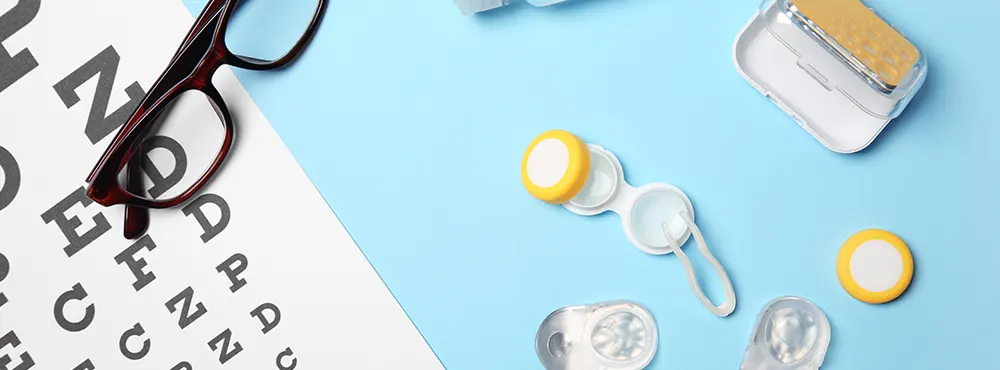
If you’re a contact lens user, you should know how to read your prescription. Confused about what the terms on your contact lens packaging mean? It’s very simple and straight forward. Here’s our handy guide to understanding your prescription and what each of the values on your contact lens prescription means.
Getting your contact lens prescription in the UK is simple and easy. First, you need to have your eyes tested, followed by a lens fitting appointment. Once your optician is happy with the way your lenses are fitting, they will issue you with a copy of the contact lens prescription (your optician is legally obliged to give you a copy of the prescription) You are then free to buy your contact lenses form anywhere you like. If you have recently got your eyes tested, but don’t have a prescription, you can legally ask for it.
As suggested by the NHS, you should aim to have an eye exam at least once every two years or more frequently if advised to do so by your optician. Check your eligibility in our article on how to get a free eye test.
The three main measurements on your contact lenses are power, base curve and diameter. Some people’s prescriptions will also include a cylinder, axis, add and in some cases, colour.
To understand your prescription, you should understand the meaning of each specification/figure mentioned on your prescription.
Once you’ve completed your contact lens fitting session, it’s time for you to get your lenses. Whether you’re looking for coloured lenses or regular lenses, you should understand the specifications mentioned on your prescription. As mentioned above, measurements in a contact lens prescription include:
Below is an example of a contact lens prescription:
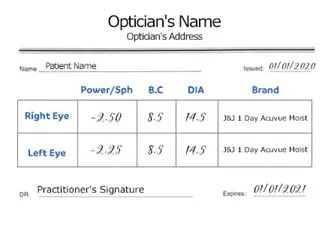
Although you can purchase your contact lenses from us without a prescription, you should have regular eye test and contact lens check-ups as per your opticians’ recommendation.
The main contact lens prescription figures include power, diameter and base curve.
The power of your lens is measured in dioptres, and this indicates the level of correction your lens must provide to correct and sharpen your vision. The correct power should normally give you 20/20 vision.
If your prescription shows a minus sign (-) this means that you are short-sighted and have myopia.
If your prescription shows a plus sign (+) this means that you are long-sighted and have hyperopia.
The base curve is the curvature of the back surface of the contact lens. This measurement is important to ensure the correct fit of a contact lens on the eye. It relates to the curvature of your cornea and is measured in millimetres (mm). A lower number indicates a steeper corneal curve.
The diameter measures the width of your contact lenses from one edge to another and is measured in millimetres. Wearing a lens with the wrong diameter may result in discomfort and irritation.
If you see CYL and AX (or AXIS) on your prescription, it means that your prescription is for astigmatism.
You will see a cylinder value on your prescription if you have been prescribed toric lenses to correct astigmatism. It is usually written in minus (-) form and describes the severity of astigmatism.
You will only have an axis on your prescription if you have astigmatism. The axis is measured in degrees (between 1 and 180) and determines the angle of correction needed for the cylinder power. . This figure is needed to compensate for the cornea’s non-spherical shape due to astigmatism. Simply put, the axis will indicate the orientation of the cylinder power and where it should sit.
Prescription figures for presbyopia can include ADD, N or D.
If you have presbyopia, or near-sightedness, you’ll have ‘add’ or addition on your prescription. The add power is usually written in dioptres and as a plus (+) power, and determines what power is required for you to see at a closer distance, such as reading or doing any close work. It indicates the magnifying power in multifocal (other names include bifocal or varifocal) contact lenses. This is usually a number between 0.50 and 3.00.
Presbyopia requires correction through multifocal contact lenses that offer visual correction through a ‘dominant’ and ‘non-dominant eye’. The figures ‘D’ and ‘N’ are used to indicate which is which, respectively.
D stands for dominant and N stands for non-dominant.
If you have opted for coloured contacts, you will also see the name of the colour on your lens packaging and sometimes written on your prescription. Be aware, that depending on your own eye colour and the pigmentation of the lens, the appearance of coloured lenses will differ from person to person.
Contact lenses can be prescribed for extreme degrees of myopia, even for those who need correction of more than -20 dioptres. Some lenses can go over -30 dioptres.
For regular soft contact lenses, the highest level of corrective power for most lenses is usually about -12.00 dioptres. Some monthly soft contact lenses can correct up to +/-20 dioptres sphere and some toric contact lenses can correct astigmatism up to -5.75 cylinder.
The examples below show various contact lens prescriptions from opticians alongside examples of how these prescriptions should look when entered on our website.
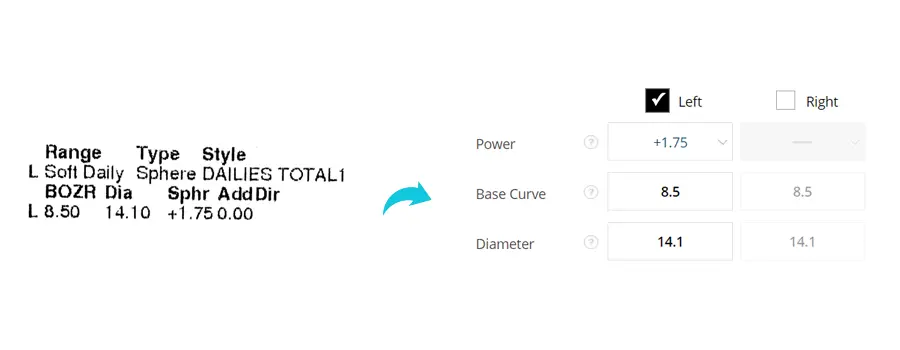
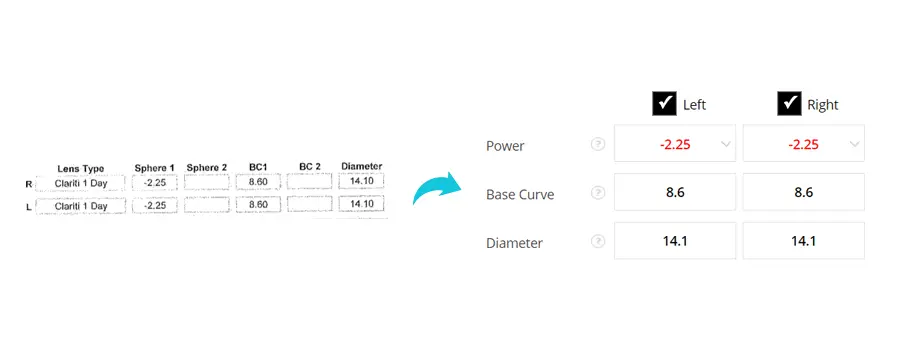
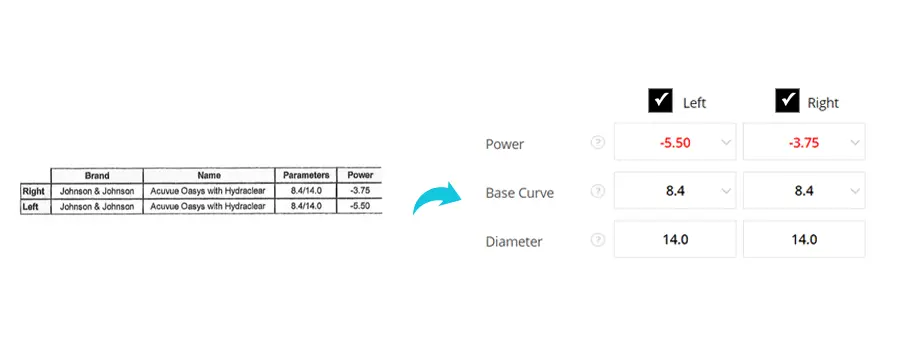
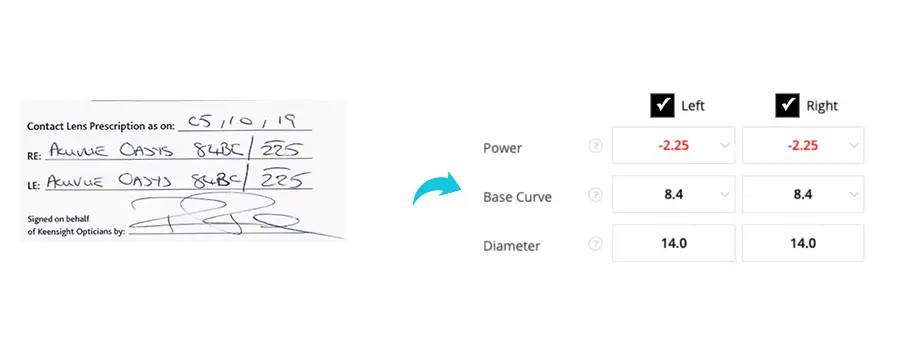
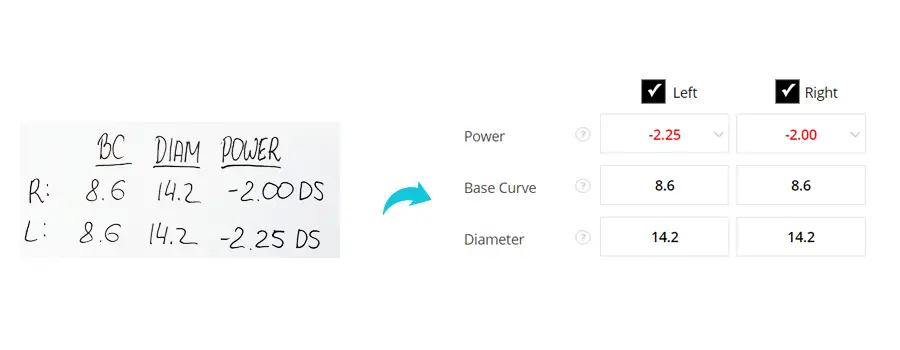
No, you cannot use your glasses prescription to purchase contact lenses. Both require a set of different measurements as they differ in their fitting characteristics. For detailed information, give our blog ‘can you convert a glasses prescription to a contact lens prescription?’ a read.
If you have any further questions regarding contact lenses, you can contact our customer care service, who are available seven days a week.